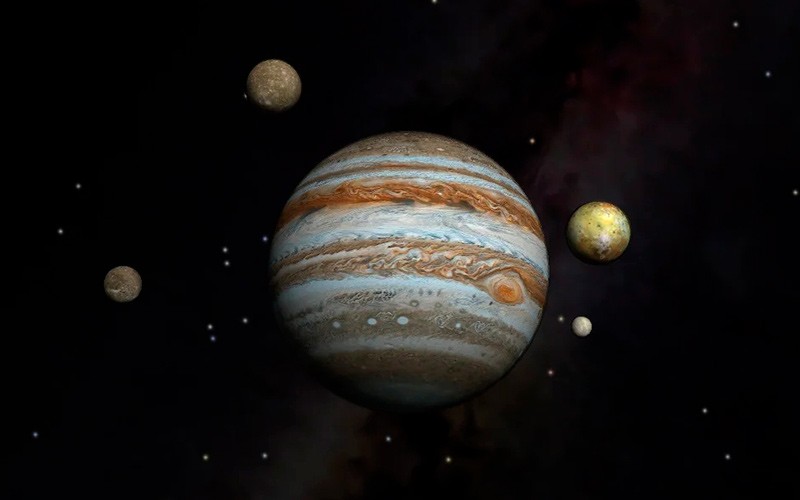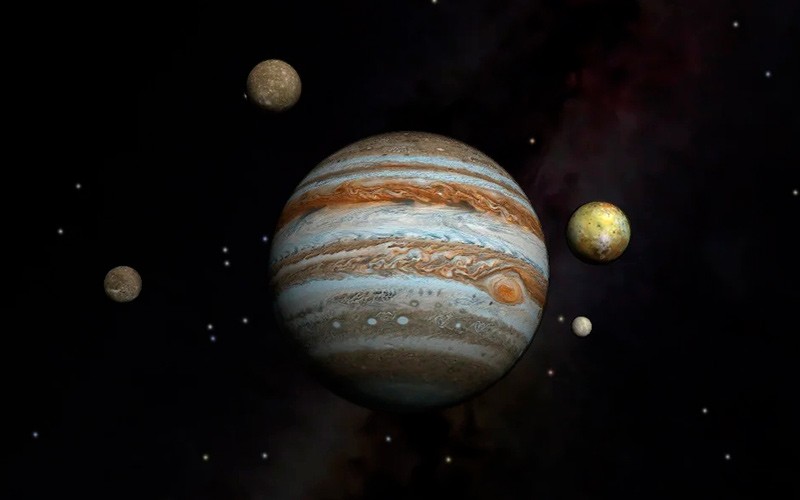Journey to Jupiter – Giant of the Solar System


General facts about Jupiter
This is not only the largest planet in our solar system, but also a real miracle of cosmic proportions. Located at a vast distance of 778 million kilometers from the Sun, this gas giant has a diameter of 139,820 kilometers, which is 11 times the diameter of the Earth. Its impressive mass is 318 times that of the Earth, and one revolution around the Sun takes about 12 Earth years.
Diameter: about 139,820 km (11 times larger than Earth).
Atmospheric composition: mainly hydrogen and helium.
Popular Facts about the Planet
Discoveries and Amazing Features of the Gas Giant
Largest Planet of the Solar System
Jupiter is larger than all other planets in the solar system, being 11 times wider than the Earth.
Great Red Spot – Giant Storm
This is a huge anticyclone on Jupiter, which has been observed for more than 300 years and exceeds the size of the Earth.
The Strongest Magnetic Field Among the Planets
Jupiter’s magnetic field is many times more powerful than Earth’s, making it the strongest among all the planets in the solar system.
Galilean Moons – Four Largest Moons
Jupiter has four large moons – Io, Europa, Ganymede and Callisto, discovered by Galileo Galilei in 1610.
The gas giant continues to amaze and inspire scientists, and its secrets remain the subject of ongoing research.
More information about the planet
Jupiter’s atmosphere is composed primarily of hydrogen and helium, creating a brightly striped appearance that we can even observe with amateur telescopes. These bands are cloud bands caused by powerful winds in the planet’s atmosphere. Jupiter is also known for its many moons, including four large moons known as the Galilean moons, discovered by Galileo Galilei in 1610.
Jupiter’s most famous feature is the Great Red Spot, a giant storm that is estimated to have raged for more than 350 years. In addition, Jupiter has a powerful magnetic field, tens of times stronger than the Earth’s, which makes its magnetosphere one of the most powerful in the Solar System.
Interesting Facts about the Planet
Despite its enormous size, Jupiter rotates around its axis faster than all the planets in the solar system. His day lasts only about 10 Earth hours. This rapid rotation contributes to the creation of extreme banded cloud formations and a powerful magnetic field.
Currently, Jupiter has more than 79 satellites, which makes it the record holder for the number of moons among all the planets in the solar system. These moons range in size from small rocky bodies to giant worlds like Ganymede, which is the largest moon in the solar system.
Jupiter emits more thermal energy into space than it receives from the Sun. This is due to the heat that remains from the planet’s formation and the process of compression under its own gravity that continues to generate heat. This fact makes Jupiter a unique planet, similar to a “mini star” in the solar system.
Contact us
Want to know more about the planet? Contact us
